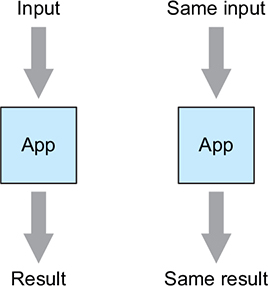chapter five
This chapter covers
- Scale-out as a central tenet of cloud-native apps
- Pitfalls of stateful apps in cloud-native software
- What it means for an app to be stateless
- Stateful services and how they’re used by stateless apps
- Why sticky sessions shouldn’t be used
The title says “Scale-out,” but really, it’s not just a matter of scaling. There are many reasons for what is probably the core tenet of cloud-native software: redundancy. Whether your application components are micro or macro, whether they can be configured via environment variables or have config baked into property files, whether they fully implement fallback behaviors or not, a key to change tolerance is that there is no single point of failure. Apps always have multiple instances deployed.
But then because any one of those multiple instances of the app can satisfy a request (and you’ll see shortly why that is essential), you need those multiple instances to behave as a single logical entity. Figure 5.1 depicts this clearly.
